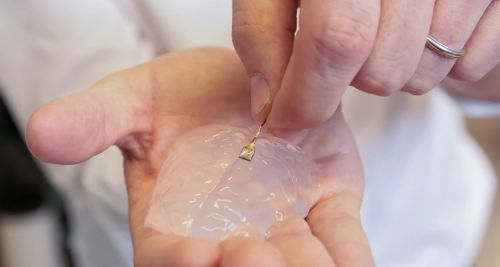Wireless Brain–Spine Interface Could Help Paraplegics Walk Again
Non-human primates have regained control of their paralyzed leg thanks to a neuroprosthetic interface that acts as a wireless bridge between the brain and spine, bypassing the injury. The interface was developed in an international collaboration led by EPFL. A feasibility clinical study has begun at the Lausanne University Hospital in Switzerland to test the therapeutic effects of the spine-part of the interface in people with spinal cord injury.
Source: EPFL
Read more: actu.epfl.ch
– Paralyzed
– Implants
– Brain-Computer Interfaces
– Neuroscience News
– Neuroscience Books
– Prosthetics
– The Future of Medicine
– The Future of Surgery

| Tweet |











